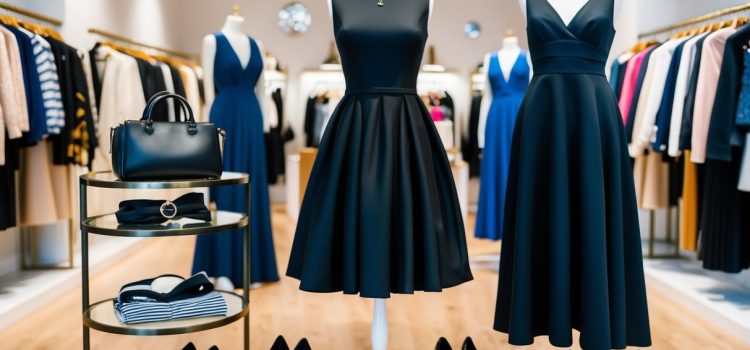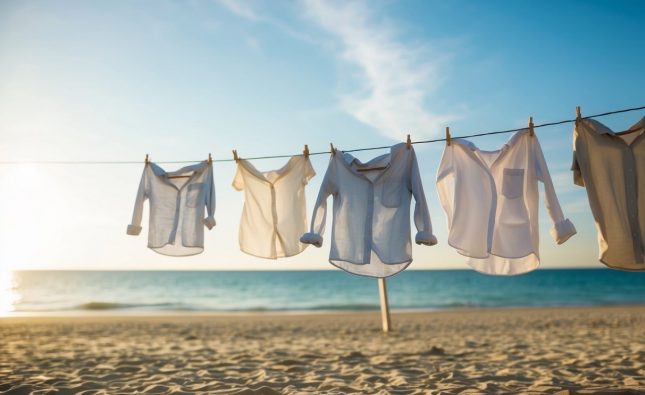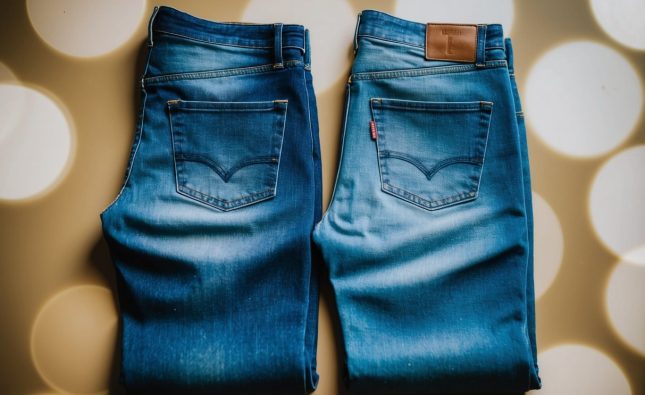
The classic black dress has long been a staple in fashion, prized for its versatility and timeless appeal. In contrast, trendy styles often capture attention with bold designs and current fads, making them appealing to those looking to make a statement. When comparing these two fashion choices, it’s clear that the classic black dress offers enduring elegance and ease of styling, while trendy styles provide opportunities for self-expression and creativity.

Fashion evolves rapidly, and each season introduces new trends that can invigorate a wardrobe. A classic black dress, though, remains a reliable choice that fits various occasions. Whether at a formal event or a casual outing, it can be paired with different accessories to suit the moment, making it a practical investment for anyone’s closet.
While trendy styles can be exciting and fresh, they may not stand the test of time in the same way. The right trendy piece can elevate an outfit and showcase personal style, but it often requires more maintenance to stay relevant. Understanding the balance between classic and trendy options helps individuals curate a wardrobe that reflects both their personality and the ever-changing fashion landscape.
The Timelessness of the Classic Black Dress
The classic black dress holds a special place in fashion. Its cultural significance and adaptability to various settings enhance its enduring appeal.
Cultural Significance
The classic black dress has been a symbol of elegance and sophistication for decades. From Coco Chanel’s iconic designs in the 1920s to contemporary interpretations, it represents a unifying thread in the fashion world.
Many significant cultural moments, such as award ceremonies and galas, prominently feature the classic black dress, reinforcing its status. Its association with high society and fashion icons makes it a staple across generations.
Furthermore, the color black signifies power and confidence, allowing the wearer to make a strong impression.
Versatility and Adaptability
The adaptability of the classic black dress is unmatched. It can seamlessly transition from day to night with simple accessory changes.
For daytime, pairing it with a tailored blazer and flats creates a professional look. In the evening, swapping accessories for bold jewelry and high heels transforms it into a striking option for formal events.
Different fabrics, such as silk, cotton, or lace, further enhance its versatility. A black dress can evoke various styles, from casual to formal, making it suitable for diverse occasions.
Its ability to complement various body types and skin tones adds to its appeal, ensuring that it remains a preferred choice for many.
Analyzing Current Trendy Styles
Current trends in fashion showcase a dynamic blend of innovation and nostalgia. Understanding the defining aspects of these trends, as well as the popular themes and elements within them, helps to appreciate their appeal.
Defining Trends in Fashion
Trends in fashion are often influenced by cultural, social, and technological shifts. Designers continuously adapt to these changes, introducing styles that resonate with contemporary audiences.
Key factors include celebrity influence, social media engagement, and the rise of sustainable fashion. For instance, platforms like Instagram and TikTok play a significant role in popularizing specific styles, such as oversized silhouettes or bold prints.
Trendy styles often reflect broader societal movements, such as inclusivity and body positivity. As consumers demand diversity, fashion houses are increasingly showcasing models of various shapes, sizes, and backgrounds.
Popular Themes and Elements
Several themes emerge within current trendy styles, highlighting what captures attention. Y2K fashion is a prominent theme, drawing inspiration from the late 1990s and early 2000s. Characterized by low-rise jeans, crop tops, and vivid color palettes, this trend has garnered significant popularity.
Another notable element is sustainable fashion. Many brands are adopting eco-friendly practices, using materials like organic cotton and recycled fabrics. This commitment not only meets consumer demand but also promotes environmental consciousness.
Finally, athleisure remains a staple. Combining comfort and style, garments like leggings and stylish sneakers continue to be favored for both casual and semi-formal settings. This versatility illustrates the modern need for clothing that accommodates busy lifestyles while maintaining aesthetic appeal.
Comparative Analysis

This section examines the distinct elements of classic black dresses and trendy styles, focusing on their design, materials, functionality, and the occasions for which they are suited.
Design and Material Differences
Classic black dresses typically feature a timeless silhouette, such as the A-line or sheath style. They often prioritize elegance and simplicity. Common materials include high-quality fabrics like silk, chiffon, or wool blends, which emphasize a sophisticated aesthetic.
In contrast, trendy styles showcase bolder designs, such as asymmetrical cuts, cut-outs, and unique necklines. They often utilize modern materials like jersey, denim, or synthetic blends, reflecting current fashion trends. The color palette for trendy styles may include vibrant hues or patterns. This divergence in design and materials caters to different preferences, allowing choice based on personal style.
Functionality and Occasions
Classic black dresses are versatile wardrobe staples. They suit various settings, from formal events to casual gatherings. Their adaptability makes them a go-to choice for dinners, weddings, and business functions.
Trendy styles, while fashionable, may have more specific uses. They often shine in social events, parties, or creative workplaces. Their standout designs can attract attention, but might not be suitable for every formal occasion. This functional difference plays a crucial role in determining which type of dress to choose for a given event.
Personal Style and Choice
Personal style is a vital aspect of how individuals express their identities. Choices in fashion reflect personal values, aesthetics, and the desire for uniqueness.
Expression through Fashion
Fashion serves as a canvas for self-expression. A classic black dress, with its timeless elegance, allows one to showcase sophistication and versatility. It can be dressed up or down depending on accessories and occasion.
Trendy styles, on the other hand, offer individuals a chance to align with current cultural movements or personal interests. These styles can showcase creativity, playfulness, and a willingness to experiment. Choices in fashion reflect individual personality traits and preferences, revealing much about one’s lifestyle and values.
Making the Decision
When it comes to choosing between a classic black dress and trendy styles, personal preferences play a crucial role. Factors such as lifestyle, occasion, and individual comfort contribute to this decision.
Some may prioritize the reliability of a classic piece that transitions easily from day to night. Others might be drawn to the excitement of trendy styles that align with contemporary fashion trends.
Ultimately, it is essential to consider how each option aligns with one’s unique persona and how it can empower them in different situations. The right choice enhances confidence and reflects personal identity in every setting.












